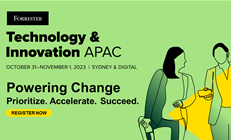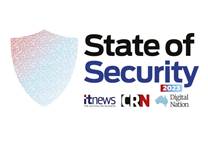La Trobe University is progressing an organisation-wide data governance effort that will help it create a single view of each student in its systems, and collect data consistently with reference to standard definitions.

In this week's iTnews Podcast, director of data and analytics Anthony Perera provides a status update on a major body of work aimed at creating a data-driven future for La Trobe University that was first revealed last year.
Perera leads a data and analytics centre of excellence that brings together data, analytics and data science operations that previously existed as distributed “pockets” of capability within the university structure.
It is driving a major three-phase program of work, the first phase of which - standing up an Azure-based enterprise data analytics platform, or EDAP - was completed last year.
The focus through 2022 was on the second phase, around data governance.
“We've got a good foundational [data and analytics] package, but to really bed down that foundation, we need that governance around it,” Perera said.
A third phase, planned for this year, will see La Trobe University “turbocharge” the migration of clean, standardised datasets from across the institution into the EDAP.
The Azure-based EDAP does already have some data: “We have ingested our student data and course data in there, and some of our CRM data,” Perera said.
“We've ingested a number of other data sources, which are really helping us with some predictive models.”
The immediate focus, however, is on the data governance phase.
In August last year, La Trobe University revealed it would use Informatica’s Customer 360 SaaS to power its data governance efforts.
These span two key areas. Firstly, data governance will enable the university to improve the cleanliness and accuracy of data, and therefore the trust that can be placed in it for analytics and reporting purposes.
Secondly, the aim is - according to the August announcement - “to simplify, master, manage and govern data sets related to each student record, thus enabling a 360-degree view of student data to drive relevant, personalised engagement and target communications with prospective students, students, post-graduates and alumni”.
“We have a number of different applications that manage different parts of the journey of the student process, so for us, it was hard to establish that single view of ‘customer’,” Perera said.
“We've managed to do it manually at the moment, but what we want to do is really try and do it in an automated manner, so master data management is really important for us.”
Operational go-live of core data governance was at the end of 2022; MDM is intended for go-live this year.
Clean data
Perera said that rules and standard definitions being put in place under the data governance effort would make it easier to establish lineage and “vouch for the quality of data”.
As it stands, relatively simple terms can have variable meanings in different parts of the university, and that makes it difficult to have consistent conversations across the institution.
“As simple as a 'year' sounds, 'year' has different connotations to different user groups, so an academic will have a different understanding of a year in comparison to a finance person,” Perera said.
It’s a similar story with defining full-time equivalent (FTE).
“There are a number of ways we calculate FTE, and they're all valid, but they're used interchangeably across the organisation, and most of the time, the FTE numbers are different,” Perera said.
“When you look at it at face value, you can't make a proper decision if you don't know what that FTE measure is.”
To address this, the university is creating a business glossary, powered by Informatica, “so that we have a shared understanding of terms.”
“It's really about making sure that when we make decisions, we understand the data, the data is consistent, and we have a common language around what that measure and metric is,” he said.
The shared understanding will mean that data-led decisions can be made “with confidence that the data is right, and everyone has the same consistent understanding of what it's telling you.”
Achieving that will bring the university closer to achieving a major strategic goal of becoming more data-driven and data-led.
There is still plenty of work to do in this area; Perera said that the university is “still in its infancy” around how it intends to apply data governance principles particularly to existing data sets, and how far to go back in terms of standardising these records, given the amount of effort likely involved.
“There will be a fair bit of remediation work but it's going to have to be a joint decision that we make as a business, not just as a D&A [data and analytics] function around what we do,” Perera said.
“Whether it is a line in the sand and start having proper quality going forward, or whether we go back and retrospectively fix it, and if we do choose to go down the path of how do we retrospectively fix it, how far do we go back and retrospectively fix it has to be a call that we made as a business rather than just a D&A team or a data steward by themselves.”
Perera said that the university had bought into the process, however, and into the idea of everyone speaking the same language of data.
“I always think data governance is an all-encompassing story so it's not just a data and analytics function. The whole business needs to buy into this and really kind of understand the value of data governance,” he said.
“La Trobe's really embraced it.
“The underlying use case for this is to make sure that our decisions that we make are data-informed, and to have data-informed decisions, we all need to be singing off the same hymn book.
“We need to be able to make sure that the decisions we make come off the same base of data and that same base of information.”
Data self-service
Currently, La Trobe University is running Power BI over its Azure-based EDAP as the self-service visualisation frontend.
“Our way of exposing EDAP, or our enterprise data analytics platform, is through the visualisations in Power BI, so that's kind of our main tool at the moment,” Perera said.
Prior to Power BI, the university had visualised data with SAP Business Objects (sitting over a SAP Business Warehouse (BW) data warehouse), which Perera characterised as “under-utilised”.
Power BI, he said, “was a raging hit at the start.”
“Power BI has gone from one or two reports when it was first introduced in 2018, to over 400 now, so we've got to kind of rationalise some of the reports that we've developed.
La Trobe University’s future may also involve the use of other visualisation tools
“Evolution needs to continue with what that visualisation looks like,” Perera said.
“We are exploring other technologies around how we really democratise data to the organisation in a way that is governed. “











 Forrester Technology & Innovation APAC 2023
Forrester Technology & Innovation APAC 2023

















